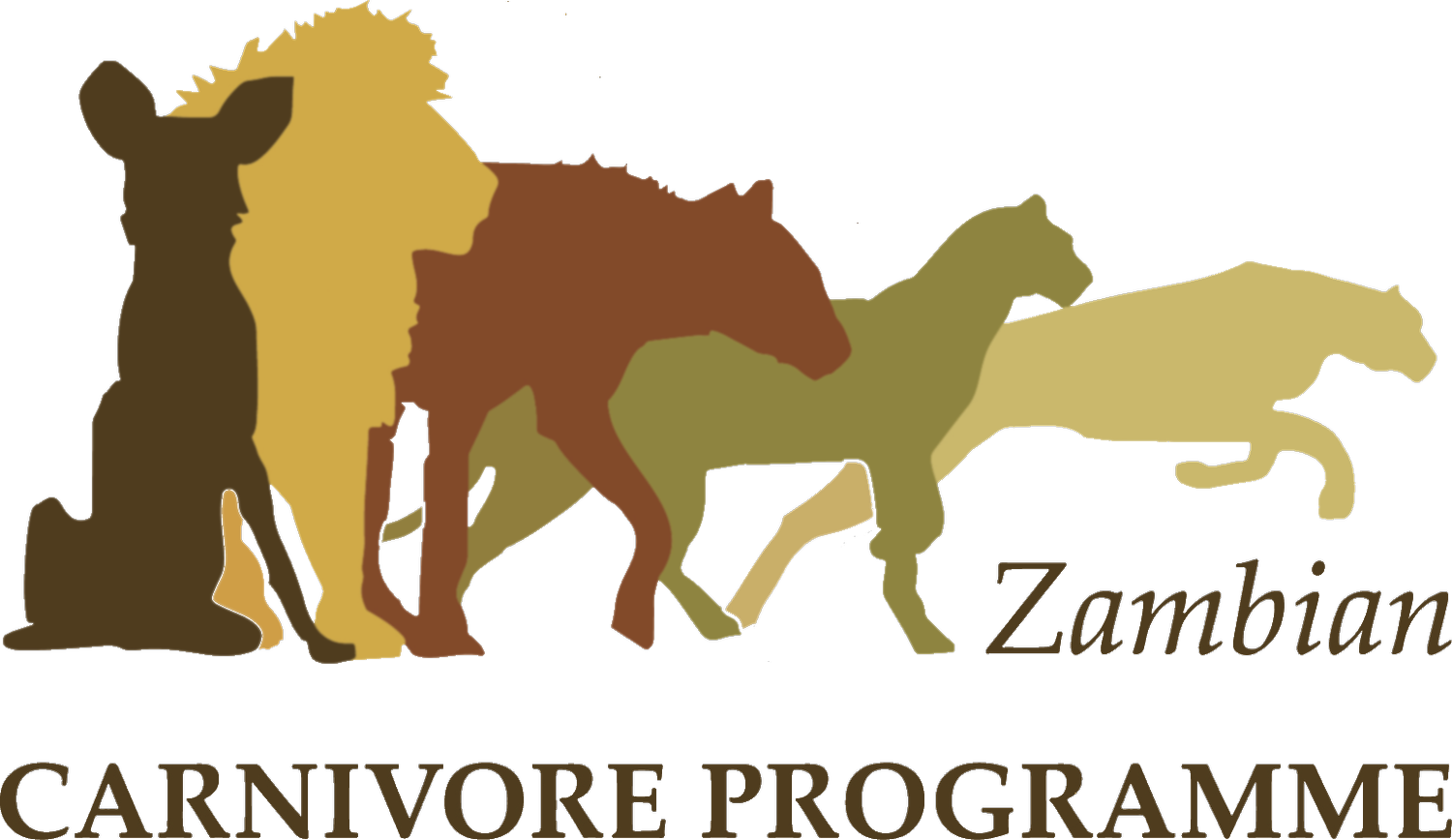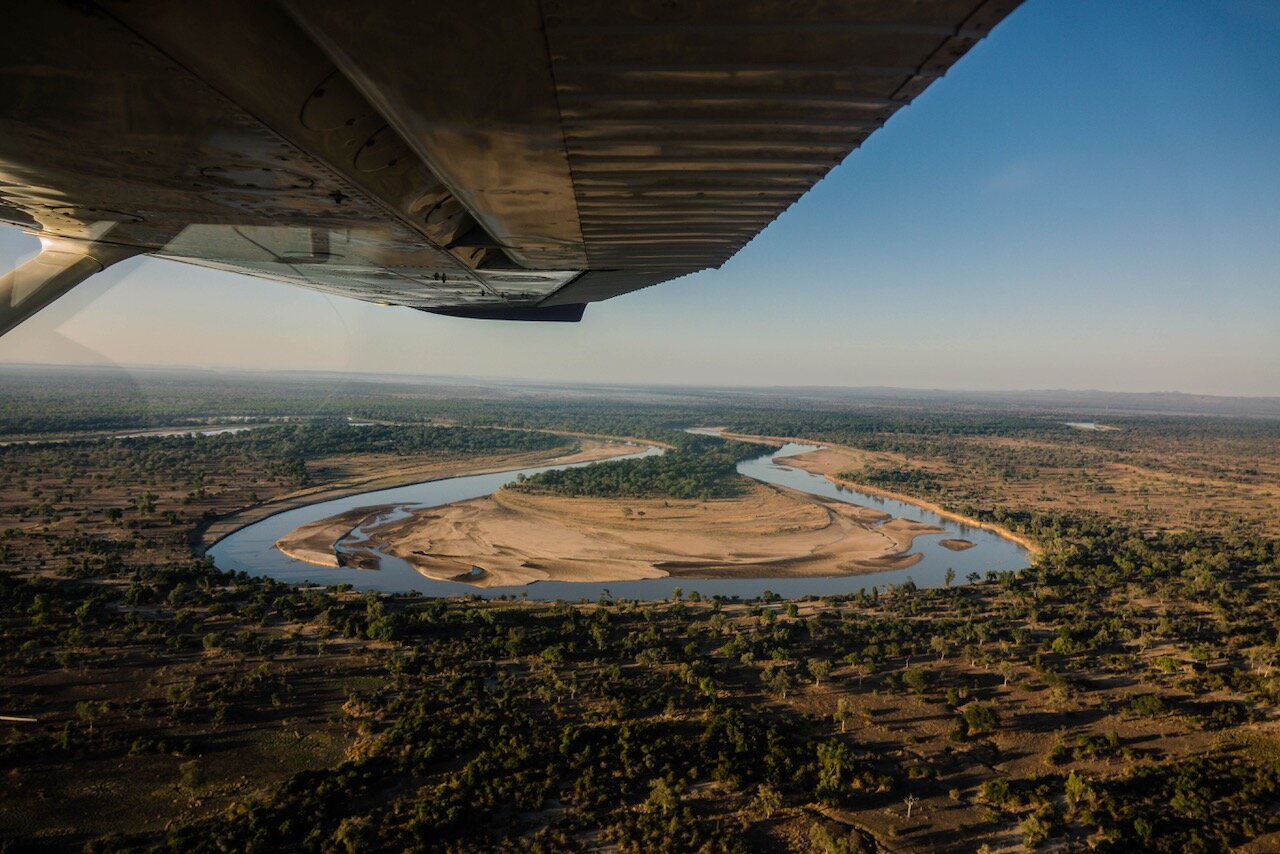The unexpected impacts of the Covid-19 pandemic on a wildlife-based economy in South Luangwa, Zambia and the benefits of aerial surveillance for large scale carnivore conservation.
The COVID-19 pandemic of 2020 has completely upended the world as we know it. Its impacts on peoples’ lives and the economy were the most immediate and significant of course; however, one less intuitive but important negative impact from the virus was its potentially grave effects on wildlife conservation in Africa. With the cessation of global travel and tourism, Africa suddenly found itself virtually empty of international visitors, and the impacts cascaded through communities and ecosystems.
A pack of wild dogs on a hunting expedition, as seen from the airplane. Photo Credit: Dr. Matt Becker/ZCP CEO
Zambia’s South Luangwa National Park and the adjoining Game Management Areas (GMAs) comprise the country’s premiere wildlife tourism area, and a recent study funded by the Global Environment Fund estimated an annual economic turnover of over $28 million USD generated by safari tourism in South Luangwa. Without tourists on safari of course things looked considerably different. Overnight lodges and safari operators found what looked to be a very busy tourism year come to a virtual standstill. With no income and no work, the camps closed temporarily and over 1,000 people employed as guides and camp managers and staff were suddenly furloughed or laid off. Similarly, the economic impacts of the pandemic rippled through the country at large, and the Zambian Department of National Parks and Wildlife (DNPW) budgets, already strained, were further reduced. The economic downturn and subsequent impact on food security also meant that the likely spike of poaching in the absence of tourism and potentially reduced law enforcement was very high. The future of Zambia’s most productive wildlife-based economy and the wildlife driving it did not look good, and would there be any wildlife left when the tourism economy returned?
An aerial view of a pride of lions resting in the early morning sun. Note the radio collar on the female in the center of the photograph. This enables the aerial monitoring team to locate the pride. Photo Credit: Dr. Matt Becker/ZCP CEO
For years a partnership between Zambia’s DNPW, Conservation South Luangwa (CSL), and the Zambian Carnivore Programme (ZCP) has been very productive in South Luangwa, with the organizations working together on an array of conservation activities ranging from anti-poaching, to community education, to research and monitoring, and human-wildlife conflict mitigation. One of the most effective integrations of work however centers around aerial and ground operations between anti-poaching and field-based monitoring teams. The South Luangwa Valley is a vast, remote and seasonally inaccessible ecosystem, with the park alone over 9,000 km2 and the addition of the GMAs makes our areas of operations often over 14,000 km2. This is equivalent to about 1.5 times the size of Yellowstone National Park in the US.
Aerial surveillance enables the effective monitoring of wild dog and lion populations across an area of 14,000 km2. Photo Credit: Les Dillard/ZCP-CSL Pilot
Most major parks in Africa have aerial support given the size of the areas, and the positive impacts of an efficient and responsive aviation programme. South Luangwa finally got aerial support in 2013, with the donation of a Cessna 180 light aircraft, and it has fulfilled a key need in all operations. For anti-poaching the plane provides DNPW and CSL with a range of activities not previously possible, including regular, rapid and extensive surveillance across the Valley; the ability to rapidly respond to poaching incidents using coordinated communication with ground patrols. In addition, the deterrence factor to poaching as a result of aerial support is tough to quantify but undoubtedly is important. The Luangwa valley is home to the country’s largest strongholds of lions and African wild dogs, both of which are species of concern. IUCN Save Our Species/European Union-funded work of ZCP ensures that we can continue to monitor and protect these animals from snaring and conflict. However, these species range over thousands of square kilometers, making aerial support critical for finding and monitoring over 215 individual lions in 20+ prides and nearly 200 wild dogs in 15 packs that range across 11,000 km2.
ZCP-CSL pilot, Les Dillard completes pre-flight checks with a DNPW scout before an early morning monitoring flight in South Luangwa, Zambia. Photo Credit: Filipe Pereira/ZCP Finance Officer
Collectively these initiatives supported by IUCN Save Our Species and co-funded by the European Union, help ensure communities will continue to benefit from the lucrative wildlife tourism economy around South Luangwa, and that the animals that drive the tourism can survive the pandemic. Perhaps the silver lining is that when the pandemic is over, we may have a new appreciation for the value of wildlife tourism and wildlife-based economies.
This article was produced with the financial support of the European Union through IUCN Save Our Species. Its contents are the sole responsibility of Zambian Carnivore Programme and do not necessarily reflect the views of IUCN or the European Union.




